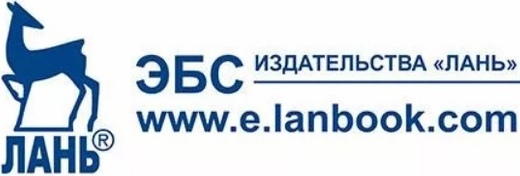RUSSIA-2050: RESULTS OF THE SOCIOLOGICAL RESEARCH
Abstract
The results of the complex sociological research of representations and expectations of citizens of Russia for 2050 are covered in the article. In April, 2015, under the leadership of Zhelnina E. V., an associate professor of the Department of Sociology of Tolyatti State University, the sociological research «Russia-2050» was conducted. The sociological tools allowing to investigate the declared perspective were developed. 783 respondents took part in questioning. The received image can be the basis for formation of a long-term strategy of public administration. The relevance of the subject is determined by a contradiction of external and internal factors of innovative development. Today, the accurate, concrete image of Russia, even in the near-term outlook, doesn't exist. For 2050, the respondents named economy (18 %) and family (17 %) among the most important spheres of activity of the Russian society. More than a half of respondents specified that population of the Russian Federation in 2050 will grow (due to the increase of birth rate and strengthening of migration). As a result of the analysis of opinions of the respondents of relativity of the importance of a social group for the individual, we revealed a rather obvious tendency to individualization. An overwhelming number of respondents noted enduring importance of the institute of family in 2050 (95,81 %). In 2050, the union of the man and woman with two children will be considered as a usual family; the family lives separately from relatives with sufficient material welfare; in a family, a traditional division of roles is accepted: the breadwinner and the defender is the husband, the woman is the keeper of home; but in a family both spouses work. The results of the research and the recommendations can be used both at the level of the state, and at the level of municipal administration as a basis for formation of a long-term strategy of the subsequent development, for development of specific programs and actions of innovative development. Besides, the data obtained during implementation of the project can be used for extension of the theory of the sociological analysis of a problem of strategic public and municipal administration, and also as the statistical material significantly enriching the theory of the public and municipal administration, sociology of management; for improvement of educational programs in the field of sociology of innovatics, economic sociology, the theory of social processes, sociology of the city and city development, sociology of management.
Introduction. Today, the interest in a perspective of formation of strategic development of Russia is very high. Rapid development of researches in this direction leads to a belief that the dispersed separate economic, political, social, financial examples of creation of the strategy of development don't give a complete and objective picture. There is a set of methodological approaches and methodical developments. Each of them is intended for definite scientific purposes, for example, for comparison of strategy of development of various countries. However the key element of any strategy is an image of future condition of the state which would form the application basis in practice of formation of the innovative strategy of management in Russia, that isn't rather developed today. Thus, in modern practice of the public strategic administration there is a need for carrying out a complex sociological research for formation of an image of Russia-2050 as the fundamentals of the state innovative policy has ripened.
In the theory and practice of strategic management it is claimed that the development of strategy of the state has to begin with a definition of the mission and vision of what it aspires to. The Russian Federation is a large country with the population of 146 270 033 people, including 89 territorial subjects of the Federation, 7 Federal districts, a set of big and small settlements. Practically each of this number of the elements included in the structure of the state represents its own picture of the future of Russia. Unfortunately, today the accurate, concrete image of Russia, even in the near-term outlook, doesn't exist. Investigating experience of other states, we can see that Kazakhstan has already created its own strategy. This strategy is based on the vision of future socio-economic indexes [3]. On the basis of this strategy and in strict accordance with it, the medium-term and short-term plans for achievement of the planned results are developed. Besides, today, Russia adjusts with various states (China, Brazaliya, Venezuela) long-term partnership. It is important to construct it on the strong base which has to be a cornerstone strategy of a stable, sustainable development of the partner states. “China-Russia 2050” can serve as an example: “The Strategy of co-development”. There is a realistic plan of cooperation of two large states till 2050, but there is no vision of the condition of the Russian state in this prospect.
The subject of formation of a social image is rather widespread perspective of applied sociological researches today. It is important to notice that the concepts «sociological portrait» and «social portrait» has been actively used in domestic sociology from the second half of the 20th century. The development of sociological portraits of representatives of various social communities and groups was considered popular and perspective. It is possible to give «a social portrait of the Soviet worker» as an example. Today, researchers quite often are engaged in drawing up sociological portraits. In modern scientific publications, it is possible to find and analyze them rather easily:
- a «sociological portrait of the average American» (F. Golov, L. Gudkov, B. Dubin);
- a «sociological portrait of students» (T. Suyarkov);
- a «sociological portrait of the youth of Russia» (M.K. Gorshkov, F.E. Sheregi);
- a «social and economic portrait of the Republic of Khakassia» (L.I. Serbay).
All similar portraits represent some sociological description. This data is obtained in the course of various sociological researches. They exclude creation of detection of any regularities. The category «sociological portrait» is widely used in the sociological discourse. However it is quite indistinct, differently defined within each separate research. Therefore, first of all, it is necessary to give an accurate definition of the concept «sociological portrait» and to develop a methodology of drawing up sociological portraits of various social objects in general and regions in particular. A great job over this problem was done by the staff of the Institute of philosophy of the Russian Academy of Sciences within the «Sociocultural Evolution of Russia and its Regions» Program. This collective has developed the most complete definition and interpretation of the concept «sociological portrait». So, the sociological portrait is «the complete description of social essence of an object (social group, a community, the organization and so forth) including the system characteristic of all components making it, and also social processes and the relations, with it connected» [2].
The process of creation of a sociological portrait of any social object (whether it be a certain social group, the territory, the city, the region or the state) needs to be accompanied with observance of several basic principles. It is necessary to include preservation of balance between integrity of the created portrait, its uniqueness and the requirement of its universality which is dictated by its practical importance for the public.
One should note that today the researches devoted to a problem of formation of a social portrait are carried out mainly in economic and demographic aspects. The emphasis is placed on demographic and statistical data, financial performance, the increase of the level of competitiveness. There is a lack of the sociological analysis of this problem from a position of complex research. A similar research would allow to unite economic, political, social, demographic, cultural and spiritual aspects. The state is not only a political institute, but also, as A.A. Meshkov fairly notes, «a complex sociocultural process and a social and psychological phenomenon».
Main part. Having analyzed the works in the studied area, once again we will emphasize the lack of sociological researches of a problem of strategy-making in the Russian state from a position of vision of prospects by its citizens. The complex sociological analysis of an image of Russia-2050 will allow to reveal the expectations, fears, confidence and intention of citizens concerning distant prospect of development of Russia.
The main objective of the article is formation of the present-day image of Russia-2050 on the basis of the data of a complex sociological research. The measurement of the factors connected with the assessment of social and economic conditions for formation of priorities of future development and effective achievement of goals is of great importance for innovative strategic management. A huge number of various factors, their identification, the objective and reliable assessment, in our opinion, is necessary to exert an impact on the state.
The relevance of the problem consists in the need of the development of the sphere of the applied sociological knowledge intended for improvement of the practice of social innovative public administration on the basis of a complex study of social reality.
Materials and methods. In April, 2015, under the leadership of E.V. Zhelnina, an associate professor of the Department of Sociology of Tolyatti State University the sociological research «Russia-2050» was conducted. 783 respondents have taken part in the questioning. The calculated reliability indicators (99%) and selection errors (±5%) allow to consider the selection representative, and the received results valid. The research was carried out according to the following methodological principles:
1) the system principle; it has allowed to consider the object of research as a complete object having the internal and external relations, components;
2) the principle of objectivity; it assumes the support of the facts and consideration of the social phenomenon which is interesting for us from a position of objective regularities;
3) the principle of determinism; it is realized in studying the declared problem taking into account its causal conditionality by the previous social processes proceeding in the country; among them it is possible to note the Soviet heritage (both its positive side, and negative aspects), the crisis of economy at the end of the 20th century, the economic recessions of the 2000s, etc.;
4) the principle of development; it has allowed to consider a problem in the course of its change, the emergence and permission of internal contradictions;
5) the principle of objectivity; it is based on studying exclusively social facts (but not their interpretations by other scientists and researchers) and the accounting of all sets of facts defining the studied perspective;
6) the principle of information security of the research; the scientific work relies on a reliable statistical base (Federal State Statistics Service, Samarastat), for synthesis of the obtained primary sociological information the professional program of statistical information processing SPSS-2.0 was used;
Results and Discussions. So, before representation of results, it is necessary to determine the structure of respondents. The ratio of men and women: 46% and 54%. It corresponds to the statistical data on Tolyatti. As for the financial position, I will pay attention to a great volume of a middle-class (about 84%). It is a buffer between rich and poor representatives of the Russian community. For 2050, from the most important spheres of activity of the Russian society, the respondents have distinguished the following:
1. Economics (18%).
2. Family (17%).
3. Human and citizen right (12%).
4. Education (12%).
5. Foreign policy (11%).
6. Domestic policy (10%).
7. Ecology (9%).
8. Social values (9%).
9. Religion (8%).
Naturally, it is impossible to allocate any sphere categorically. In this case, we will gain defective development, it is essential warped. All spheres are important for the state. Here the rating of their importance is shown.
The question of the future population of Russia in 2050 has been asked one of the first. More than a half of respondents have specified that it would grow (with various share of intensity) – (raise) 47% and 13% (grow considerably). The respondents have selected the reasons which will promote the growth of population of the country in 2050: equally the increase of birth rate and strengthening of migration (36% and 38% respectively). But, running a little forward, I will tell that the answers of the respondents to the subsequent questions don't allow to count on the birth rate increase fully. Therefore, proceeding from the cumulative result, it is possible to count only on migration in case the state doesn't concentrate the efforts on population policy.
From the analysis of the respondents’ answers to the question «What Place for the Russian in 2050 will be taken by group or collective?» we have revealed a rather obvious tendency to individualization.
It is important to tell that the overwhelming number of respondents have noted the importance of the institute of family for 2050 (95,81%). An exclusive importance of the family is shown in spite of the fact that the tendency to individualization, separation of the individual from collective was shown. A bigger number of respondents (88%) have supported full families – a father, a mother, 1-2 children. Both childless couples and families with one parent were mentioned as incomplete families. Besides, there the answers in which it was said about what is considered to be a real family now and in 2050. So, summing up the result, one may say, that in 2050, the union of the man and woman with two children will be considered as a usual family. The family will live separately from relatives in sufficient material welfare. In a family, a traditional division of roles is accepted: the bread-winner and the defender is the husband, the woman is the keeper of home. But in the family both spouses work.
To the question about the number of children in the family we have received the following results. The arithmetic average makes 2,08. For improvement of demographic indicators, it is necessary to realize these coefficient in 2,19. In other words, it is 3 children per family. The average value was 2 children. Thus, it is possible, at least, in case of stability of population of Russia in 2050.
It was interesting to learn what the situation with higher education in Russia in 2050 will be. The average indicator of representation of workers with higher education will make 58%. This is slightly more than a half of workers. In principle, it is quite a good indicator. There is no tendency to latent need of obtaining a diploma for getting work.
The respondents called more than 100 professions which, in their opinion, will be prestigious in 2050. We have united them in groups (depending on extent of the decrease of popularity): 1. Engineer. 2. Doctor. 3. Programmer. 4. Teacher. 5. Lawyer. 6. Economist. 7. Manager. 8. Ecologist. 9. Scientist. 10. Builder.
The following will be important for the Russian in 2050 (depending on extent of the decrease of popularity): 1. Family. 2. Prosperity. 3. Work. 4. Personal growth. 5. Money. 6. Health. 7. Education. 8. World peace. 9. Stability. 10. Rights and freedoms of the citizen.
Among fears which will disturb the citizens of Russia in 2050, according to the obtained data, I would name the following (depending on extent of the decrease of popularity): 1. Ecology. 2. Income. 3. Unemployment. 4. Foreign policy. 5. Health. 6. Economy. 7. External aggression. 8. Domestic policy. 9. Inflation. 10. Housing economy.
Among the spheres which will make the Russians happy in 2050 are the following (depending on extent of the decrease of popularity): 1. Good income. 2. Progress. 3. Family. 4. Children. 5. Social policy. 6. Industry of leisure. 7. Patriotism. 8. Personal success. 9. Internal political stability.
The scientific importance of the project consists in the development of an interdisciplinary approach to such spheres of sociological knowledge as the sociology of management, sociology of public sector and the theory of the public and municipal administration. The research expands the prospect of studying the process of the state strategy from a position of phenomenological and behaviour approaches. The research deepens the study of the process of elaboration of a long-term strategy of public administration. The results give an idea of the opinion of citizens of the state of the future of their country (a distant prospect – 2050), will allow to correct the federal, regional and municipal policy for the purpose of optimization of programs of development of innovative processes in society and the state.
Conclusions. The received results of research can be used:
1) at the level of the state, municipal and regional authority when developing federal, regional and city programs of strategic development;
2) for expansion of the prospect of the sociological analysis of the problem of a strategy in the region and the modern Russian society in general;
3) as the statistical material significantly enriching the sociology of innovation and the theory and practice of the public and municipal administration;
4) for improvement of educational programs, training courses and methodical grants in the field of the theory and practice of the public and municipal administration, sociology of innovation, economic sociology, the theory of social processes, sociology of the city and city development, sociology of management;
5) the materials of researches can find application in the cultural and educational work with the youth; in preparation of student's scientific works.
The term innovation, firmly ensconced in the academic community, is often viewed from the perspective of economic, technological or managerial approaches. So, it is treated as something new, designed to increase the profitability of the enterprise, to reduce the cost or improve the manufacturing process, to ensure competent management of innovation. However, in our opinion, they are excluded from the analysis of a very important aspect in the studying, implementation, management and evaluation of innovation, namely, man as a consumer and user of innovation.
It is good that today there are works that address the problem of man in the context of innovation: the attitude to innovation, evaluation of innovations, innovative human capital, commitment to innovation [2; 4; 5; 8; 9]. However, it should be noted that not enough attention is paid to the phenomenon of habitulization of innovation (HI). The relevance of the work is explained by following. First, the success of innovation both in manufacturing and in the whole society will be real not only due to the reasonableness, timeliness innovation itself, but also to the willingness and openness of the employee, or the general population. In the event of unavailability or unwillingness of subjects’ innovation, it can be taken by root with a great difficulty or be boycotted. Secondly, the lack of theoretical and methodological framework, a clear conceptual apparatus complicates a deep and comprehensive analysis of the problem. It does not provide a correct prediction and formulation of recommendations to create an environment for innovation. These factors dictate the need for conceptualizing the concept of HI.
ACKNOWLEDGEMENTS. The study was performed within the scientific work on the thematic plan of the Project No. 383: «The workers of the industrial and scientific and technical sphere in the conditions of the monotown (on the example of the sociological analysis of Togliatti)».


















Reference lists
1. Belyaeva L.A. et al. A socio-cultural portrait of the region: typical program and methods. Socio-cultural portrait of the region: typical program and methodic, methodical problems. Moscow, IF RAN, 2006.
2 Bunkovskiy D.V. Innovations in payroll management of a company (as exemplified by an enterprise of pipeline transport). Voprosy upravleniya, 2015. №3(15). Pp. 149-157.
3. Denisov G.A., Kamenetskiy M.I., Ostapenko V.V. Innovation: domestic and foreign experience (analysis, financing, stimulation). Moscow: MAKS Press, 2001.
4. Ilyinykh S.A., Mikhailova E.V. Innovative susceptibility and resistance to innovations: a sociological view. Teoriya i praktika obshhestvennogo razvitiya, 2015. №4. Pp. 12-14.
5. Karpova Ju. A. Introduction to sociology of innovation: a study guide. St. Petersburg: Piter, 2004. 192 p.
6. Kazahstan-2050. Our strength. URL: http://strategy2050.kz/ru (date of access: February 20, 2016).
7. Konovalova N.I. Innovative forms of providing social services to the population: Diss. kandidata jekonomicheskih nauk. Moscow, 2009.
8. Lapin N.I. People in innovation. Teoriya i praktika innovatiki: a study guide. Moscow: Universitetskaja kniga, Logos, 2008.
9. Nasibullin R.T. There are not only emotions about innovations. Sociologicheskie issledovanija, 2014. №9. Pp. 58-63.
10. Ozhegov S.I., Shvedova N.Ju. Explanatory dictionary of the Russian language: 80000 words and phraseological expressions. Rossijskaja akademija nauk. Institut russkogo jazyka im. V.V. Vinogradova. Moscow: OOO «INFOTEH», 2010.
11. Shumpeter I.A. The theory of economic development. Moscow: Jeksmo, 2007.